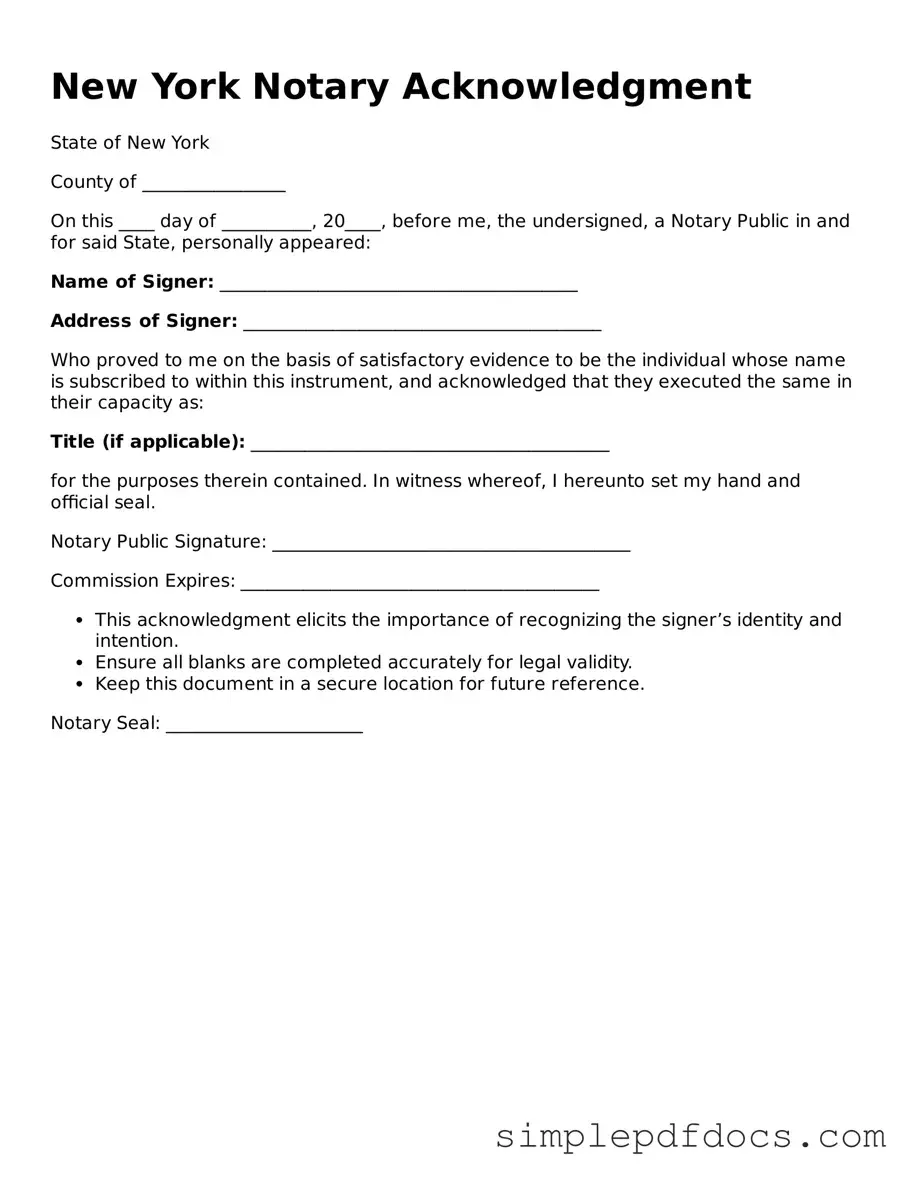Legal Notary Acknowledgement Document for the State of New York
The New York Notary Acknowledgement form is a legal document used to verify the identity of individuals signing a document. This form confirms that the signer appeared before a notary public and acknowledged their signature willingly. Understanding its purpose is essential for ensuring the validity of various legal transactions.
Get Document Here
